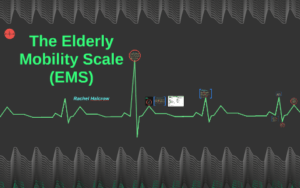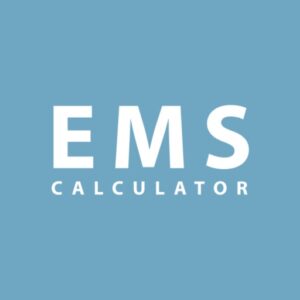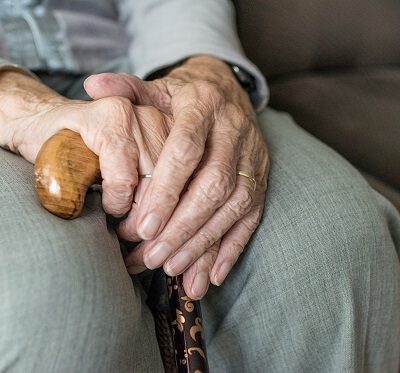As people age, they can often experience a decrease in mobility. This can be a challenge for them when it comes to completing everyday tasks. An elderly mobility scale can help seniors maintain their independence and quality of life. In this blog post, we will discuss the benefits of an elderly mobility scale and how it can help your loved ones live healthier life!
Contents
What Is the Elderly Mobility Scale?

The Elderly Mobility Scale (EMS) is a 13-item scale that was developed to measure functional mobility in community-dwelling older adults. The EMS has good reliability and validity and has been used in research to predict falls, disability, and mortality. All that is required for this test is a stopwatch or some other type of timer. The average time it takes for a patient to complete the scale is about two minutes.
The EMS includes items such as:
- Being able to rise from a chair without using your hands
- Being able to walk up 10 steps without resting
- Being able to walk half a mile without resting
Scores on the EMS range from 0 to 52, with higher scores indicating better functional mobility.
How Is the Test Performed?

The Elderly Mobility Scale is performed with the individual standing. The test administrator will hold onto the individual’s elbow with one hand, and ask the individual to walk heel-to-toe for 10 feet. The test administrator will then observe the individual’s ability to keep their balance while walking and performing different tasks.
- While observing, the test administrator will look for any signs of unsteadiness, wobbling, or difficulty with tasks. They will also look at how well the individual can keep their balance while standing still.
- The test administrator will then ask the individual to turn around and walk back to the starting point. They will also ask the individual to stand on one leg and raise the other leg 6 inches off the ground, and then hold it there for 10 seconds. The test administrator will be looking for any signs of difficulty with balance or coordination.
- After the test is completed, the test administrator will give the individual a score based on their performance. A score of 0 means that the individual was able to walk without any problems, and a score of 1 means that the individual had some difficulty with balance or coordination.
The Elderly Mobility Scale is a simple test that can be used to assess an individual’s ability to walk and perform basic tasks. It is a quick and easy way to screen for any problems with mobility and can help to identify any potential risk for falls.
What Does the Test Result Mean?
The test result means that the person’s ability to move around independently is limited. This may make it difficult for them to perform activities of daily living, such as getting out of bed, bathing, dressing, and using the toilet. It may also make it hard for them to walk or climb stairs.
- A score of 0-2 indicates that the person can move around independently and can perform all activities of daily living.
- A score of 3-5 indicates that the person can move around independently but may have difficulty with some activities of daily living.
- A score of 6-7 indicates that the person is not able to move around independently and will need help with all activities of daily living.
- A score of 8-10 indicates that the person is not able to move around at all and will need complete assistance with all activities of daily living.
What Is A Good Mobility Scale?
EMS, or the elderly mobility scale, is a test conducted by health professionals to determine an elderly person’s level of mobility. It might be used to measure whether physiotherapy or another exercise program has improved an older patient’s movement.
A score of 10-13 usually suggests that the patient is right on the border of being able to move around independently and safely. A score over 14 generally indicates that patients can do mobility maneuvers alone and also be independent regarding basic activities of daily living.
Why Is the Elderly Mobility Scale Important?
The EMS is important because it can help identify older adults who are at risk for falls and other mobility-related problems. Falls are a leading cause of injury in older adults, and can lead to a loss of independence and decreased quality of life.
The EMS can also be used to track changes in Mobility over time. This is important because many older adults experience a decline in mobility as they age, which can lead to falls and other problems.
What Are the Benefits of the Elderly Mobility Scale?

The EMS has several benefits, including:
Quick And Easy
The EMS only takes a few minutes to administer, making it quick and easy to use. For instance, if you are a clinician, you could easily incorporate the EMS into your routine clinical practice. Example: You could ask your patients to complete the EMS at their next visit, and then use the results to help inform your care.
Objective
The EMS is an objective measure of mobility that is reliable and valid. This means that it can be used to accurately assess an individual’s mobility. For instance, if you are a researcher, you could use the EMS to measure the effects of an intervention on mobility.
Valid And Reliable
The EMS has good reliability and validity, meaning that it is a reliable and accurate measure of mobility. For example, a study of over 1,000 older adults found that the EMS was able to accurately identify those who were at risk for falls.
The EMS is also quick and easy to administer, which makes it ideal for busy clinicians. It only takes about 5 minutes to complete and can be done without any special equipment.
Efficient
The EMS is an efficient way to assess mobility in older adults. It is a brief test that can be easily administered in a clinical setting.
It is also helpful in identifying those at risk for falls. Falls are a major cause of injury and death in older adults, so it is important to identify those at risk so that they can receive the appropriate interventions.
Predictive
The EMS is predictive of falls, disability, and mortality. This means that it can help identify older adults who are at risk for these problems.
Tracking: The EMS can be used to track changes in Mobility over time. This is important because it can help identify older adults who are declining in Mobility and at risk for falls and other problems.
Used In A Variety Of Settings
The EMS can be used in a variety of settings, including clinical, research, and community settings. For instance, if you are a clinician, you could use the EMS to assess an individual’s mobility in your clinical practice. If you are a researcher, you could use the EMS to measure the effects of an intervention in a research study. And if you work in the community, you could use the EMS to assess the mobility of older adults in your community.
The EMS is a valuable tool that can be used to assess functional mobility in older adults. If you are a clinician, researcher, or community worker, you may find the EMS to be a helpful tool in your work with older adults.
The EMS is a quick, easy, and predictive way to measure functional mobility in older adults. It can be used to identify those at risk for falls and other mobility-related problems and to track changes in Mobility over time.
Concerns and Limitations
There are a few concerns and limitations to the use of the Elderly Mobility Scale (EMS).
- First, the EMS does not account for all types of mobility impairments. It only assesses three types of mobility: transfers, locomotion, and balance.
- Second, the EMS may not be sensitive enough to detect changes in mobility over time.
- Third, the EMS only assesses ability in activities of daily living; it does not assess functional mobility, which is the ability to perform more complex tasks such as going up and down stairs.
- Finally, EMS has not been well-studied in people with conditions that can cause mobility impairments, such as stroke or Parkinson’s disease.
Conclusion
It may be concluded that the elderly mobility scale is a reliable and valid tool to measure mobility in older adults. It is a useful tool to assess the functional status of older adults and to identify those at risk for falls. The scale can also be used to monitor changes in mobility over time.
Physical Therapy help patients recover from pain. If you’re experiencing Back pain, Shoulder pain, Knee pain, Neck pain, Elbow pain, Hip pain, or Arthritis pain, a physical therapist at MantraCare can help: Book a physiotherapy session.


